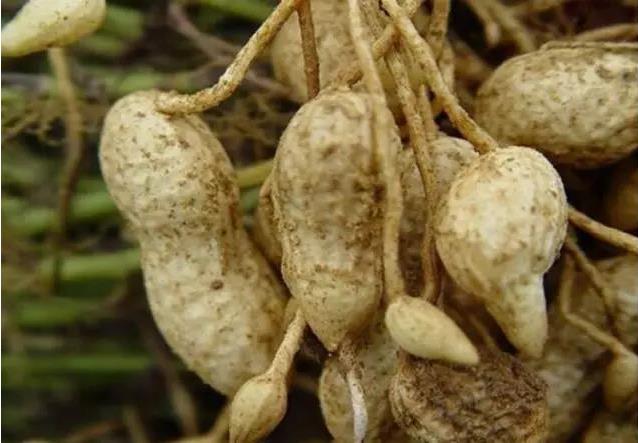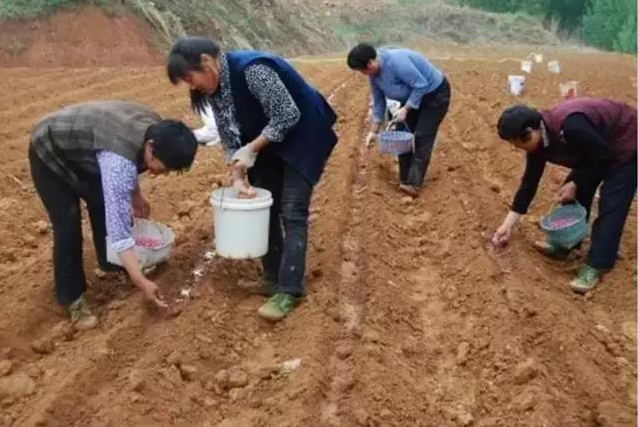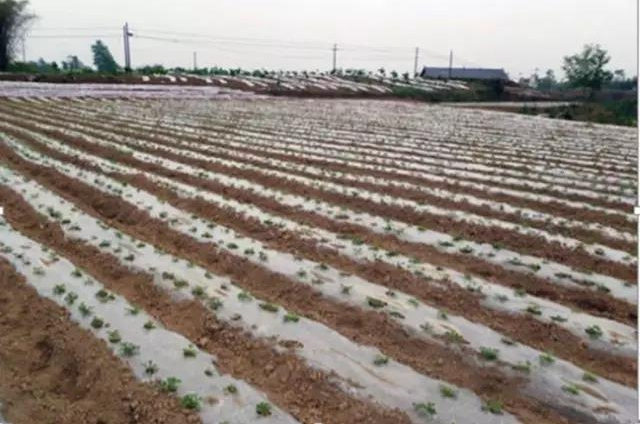The Ministry of Agriculture has issued a new report: This year's peanut production will be high
Time:2023-01-31 Follow:858
At present, peanut planting is about to begin in the Huang-Huai-Hai, northern, southwestern regions and the Yangtze River basin. According to the climate characteristics of this year and the actual production conditions of various regions, the National Agricultural Technology Extension Service Center, together with the oil expert guidance group of the Ministry of Agriculture, will put forward the technical guidance for peanut production in 2017.

1、 Arrange stubble reasonably and optimize planting structure
First, make full use of the advantages of drought and barren tolerance of peanuts, and moderately increase the planting area of spring sown peanuts with one crop per year in shallow hills and the old Yellow River.
Second, in the spring flower production area with higher accumulated temperature and better cultivated land quality, the high-yield field of spring peanut with two-year three-cropping system was adjusted to two-year summer direct seeding peanut. Adjust wheat interplanting peanuts to direct seeding peanuts in summer, and effectively solve the outstanding problems of soil hardening, poor seeding quality, weak seedlings and inappropriate mechanical operation in wheat interplanting peanuts through ridge mulching, single seed precision seeding, mechanical operation and other measures, so as to improve peanut yield and production efficiency.
Third, make full use of corn, watermelon, fruit and other crops to intercrop peanuts and improve the comprehensive benefits of planting.
2、 Scientifically select varieties to improve peanut quality
According to the soil, climate, market and other conditions, all regions should select high-quality special varieties with high oil content, high oleic acid content, high protein content, suitable for baking, etc., to gradually meet the differentiated requirements of peanut quality for different uses such as oil, edible and export.
In the Huang-Huai sea area, spring peanut or spring peanut covered with plastic film should choose high-quality special-purpose medium-high-fruit peanut varieties with a growth period of about 125 days, wheat ridge intercropping peanut should choose high-quality special-purpose medium-high-fruit peanut varieties with a growth period of less than 125 days, and summer direct seeding peanut should choose high-quality special-purpose medium-high-fruit peanut varieties with a growth period of about 110 days.
Middle and early maturing large fruit-type varieties with a growth period of 120-130 days are selected in the northeast production areas, and early maturing small fruit-type varieties with a growth period of less than 120 days are selected in areas with high latitude, short frost-free period and low accumulated temperature.
The spring peanut in the southern production area selects the medium-fruit or large-fruit pearl bean varieties with a growth period of about 120 days. When selecting varieties, we should pay attention to the consistency between the varieties' resistance and the local characteristics of drought, flood, disease and insect pests, especially the high resistance varieties should be selected in the areas (plots) where bacterial wilt occurs, and the strong resistance varieties should be selected in the areas where fruit rot occurs more seriously. In production areas with high mechanical harvest, varieties with concentrated results, good maturity consistency, good fruit handle toughness and suitable for mechanized harvest should be selected.

3、 Seeding in proper time and quantity to improve seeding quality
First, determine the suitable sowing date. The spring sowing time of large groundnut in the northeast and Huanghuai sea areas should be controlled within five consecutive days. The ground temperature of 5cm should be stable above 17 ℃, and that of small groundnut should be stable above 15 ℃. Generally, it should be from the late April to the early May, and the film-covered groundnut can be earlier than the early and middle April; The suitable sowing time for intercropping peanut in wheat ridge is 15-20 days before wheat harvest, generally in the middle and late May; Summer direct seeding peanuts should be prepared in time after the wheat harvest and sown as early as possible. The sowing date is generally not later than June 20. The ground temperature of 5cm for spring peanut in the southern production area should be stable above 12 ℃, and the seeds should be sown in the cold tail and warm head.
The second is to determine the appropriate seeding amount. Generally, large peanuts are sown 8000-9500 holes per mu in spring, small peanuts are sown 9000-10000 holes per mu in double seeds, and 14000-15000 seeds per mu in single seeds; Summer direct seeding of big peanuts is 15000-17000 seeds per mu and 9500-12000 holes per mu.
Third, do a good job of seed dressing with chemicals. Peel the seeds 10-15 days before sowing, and sun the seeds 2-3 days before shelling. Remove the moldy, damaged and germinated seeds, and store and seed them according to the size of the seeds. The seeds that have been shelled before sowing shall be properly stored to prevent moisture absorption from affecting the germination rate. Select appropriate chemicals for seed dressing. The seeds should be evenly mixed and sown as soon as they are mixed. The seeds can be sown after the seed coat is dried. It can effectively control soil-borne diseases such as root rot, stem rot, crown rot and underground pests such as grubs.
4、 Scientific fertilization and watering to promote normal development
First, scientific fertilization. The general principle of peanut fertilization is to apply more organic fertilizer, less chemical fertilizer, organic-inorganic combination, quick-release combination, and skillfully apply functional fertilizer according to the local conditions. In acid soil, physiological alkaline calcium fertilizer such as lime can be added; The continuous cropping soil can be added with lime nitrogen and biological fertilizer; Peanut rhizobium fertilizer was added to gravelly sandy soil, coarse sandy loam soil and stubble soil with low fertility to enhance the nitrogen fixation capacity of the nodules; Increase the application of biological potassium fertilizer in peanut high-yield fields to promote the effective release of soil potassium. Biofertilizer can be applied to reduce the amount of fertilizer, control heavy metal pollution and nitrite accumulation.
Second, water scientifically. Spring peanut and summer peanut sown with sufficient moisture generally do not need to be watered at seedling stage. Proper drought is conducive to root development, improving the ability of drought and waterlogging resistance of the plant, and also conducive to shortening the first and second internodes, facilitating the fruit needle down, and increasing the rate of full fruit; In case of drought in the seedling stage of wheat and peanut, timely watering shall be carried out to protect the seedlings. The middle stage of growth (flowering and pod stage) is the period when peanut is sensitive to water, and it is also the period of high water demand in its life. Drought in this period has a great impact on the yield. When the plant leaves wither around noon, it should be watered in time. In case of drought in the late stage of growth (full fruit stage), water should be watered and watered lightly in time to prevent premature plant senescence and Aspergillus flavus infection. Watering should not be carried out in the high temperature period, and water accumulation in the field should be prevented, otherwise it is easy to cause rotten fruit, and it is not suitable to use low-temperature well water for direct irrigation. Peanut fields in the south or areas with more rainfall should be unblocked to prevent waterlogging.

5、 Strengthen field management to reduce diseases, pests and weeds
First, put seedlings and clear branches in time. If the peanut film covered with film is covered with soil, when the cotyledon node rises to the film surface, spread the soil above the seeding line to both sides of the plant and row in time, and remove the remaining soil to the ridge. When the seedlings without soil on the film cannot break the film automatically, they should break the film manually and release the seedlings in time to minimize the film hole. From the stage of clumping (4 compound leaves on the main stem), check and pick out the transverse branches buried under the film in time to make them healthy and develop. 2-3 times are required before flowering.
Second, timely intertillage and weeding. Inter-tillage, stubble eradication and weeding shall be carried out within 3-5 days after the wheat harvest of peanut covered with wheat. After inter-tillage, 120 ml of 50% acetochlor emulsifiable concentrate and 40-45 kg of water shall be sprayed on the ground. After the groundnut is planted in the open air and covered with soil, acetochlor is sprayed on the ground. When the peanuts are close to the ridge sealing, the soil should be laid in the trench between the two rows of peanuts. The soil should be clear, the soil should be smooth, the ridge waist should be fat, and the ridge top should be concave, so as to facilitate the fruit needles to penetrate into the soil and bear fruit.
Third, reasonable chemical regulation. When the plant grows to 30-35 cm, the growth regulators such as paclobutrazol or uniconazole should be used to control the flourishing fields. They should be applied in strict accordance with the instructions for use. Too little spraying can not control the flourishing. Too much spraying will make the leaves of the plant premature and reduce the yield. Leaf spraying shall be carried out before 10 a.m. or after 3 p.m.
Fourth, green prevention and control of diseases and pests. It is recommended to use physical trapping and biological control methods to control pests and chemical agents to control diseases. The promotion of physical trapping and killing technologies such as black light lamp, sex attractant and insect trap plate can not only control insect pests, but also reduce the use of chemical pesticides. Biological agents such as Beauveria bassiana, Metarhizium anisopliae and avermectin can be used to control underground pests such as peanut grubs. Appropriate low-toxicity fungicides can be selected to control leaf spot and other diseases. Peanut varieties with high resistance should be selected for the control of bacterial wilt and rust.
6、 Proper harvest and safe storage
Harvesting, drying and storage are important links after peanut production. In production, it is generally timely harvested when the plant turns yellow from green, the main stem retains 3-4 green leaves, and most of the pods are full and mature. The specific harvest period should be flexibly controlled according to the weather conditions. After harvest, it should be dried or dried as soon as possible to reduce the moisture content of pods to less than 10%. Pay attention to control the storage conditions, prevent the damage of storage pests, and prevent the occurrence of aflatoxin pollution.
Source: Information Office of the Ministry of Agriculture




